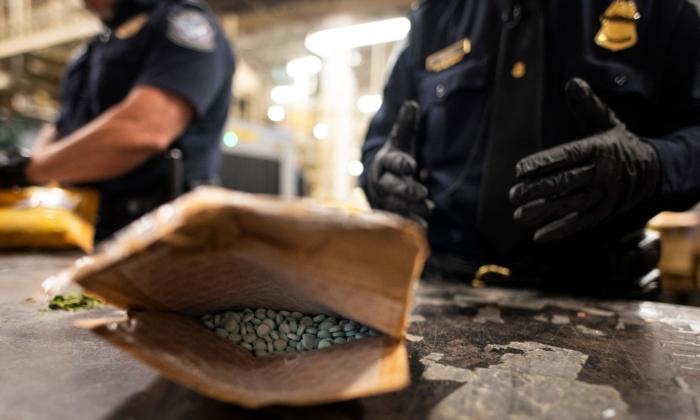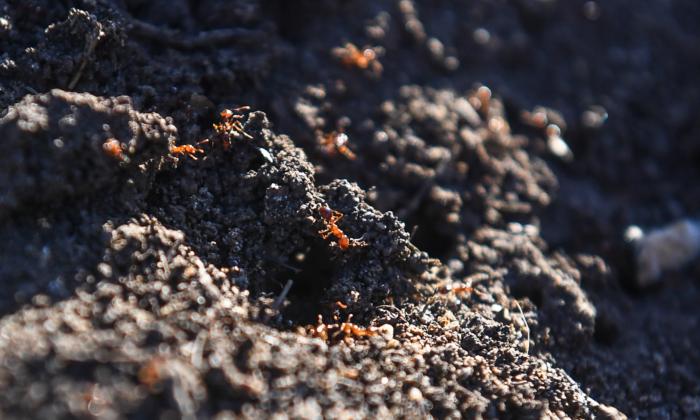Australia is underprepared for the possibility of a fentanyl epidemic as the drug lies in wait as the “wolf at the country’s door.”
That’s the warning from health experts who say while illicit fentanyl is yet to garner underworld popularity, more needs to be done to get ahead of its threat.
Fentanyl, which can be about 100 times stronger than morphine, is prescribed legally in Australia for severe pain but can be illegally trafficked.
Cohealth addiction medicine specialist Paul MacCartney warns it is a matter of when—not if—fentanyl will hit Australia’s streets in earnest.
“There is no doubt that fentanyl is the wolf at Australia’s door, and when it arrives it will take a catastrophic toll on our community,” Dr. MacCartney told AAP.
Cohealth is pushing for state and federal governments to roll out proven prevention measures including more supervised injecting centres, drug testing facilities, and improved access to treatments such as methadone ahead of any potential fentanyl influx.
The community health service also wants greater evidence-based education and naloxone, the overdose-reversal drug, to be more accessible.
That proposition is supported by Monash Addiction Research Centre deputy director Suzanne Nielsen, who says it is hard to predict how a fentanyl crisis might play out in Australia.
Parts of the U.S. went from having virtually no illicit fentanyl to a market where the drug dominated and was identified in most heroin samples after a couple of months, she said.
In Canada, overdose rates doubled in about a year.
“We have seen very steep rises in the rates of overdose and overall numbers of overdose in these other locations,” Professor Nielsen told AAP.
“Based on that, it wouldn’t be unreasonable to expect to see these very dramatic increases in Australia as well if [fentanyl] does emerge.”
While Australia already has strategies to cope with fentanyl and heroin, the real question is whether they can be scaled up quickly enough, Prof. Nielsen said.
Sore points include a lack of access to opioid agonists like methadone and a decline in the number of doctors willing to prescribe them.
Prof. Nielsen said Australia does not need to wait before opening more supervised injecting centres, a move that would save lives.
“It doesn’t take very long to count the number of centres we have in Australia—we have two,” she said.
“We already have too many preventable deaths from opioids in our community that those centres could help with, so we don’t need to wait for fentanyl.”
Despite the warnings, the Australian Federal Police has recorded a decline in fentanyl shipments intercepted at the border, with only 276 grams of the drug blocked so far this financial year.
This compares to officers seizing 7.7 tonnes of methamphetamine, 1.99 tonnes of cocaine, 690kg of MDMA—also known as ecstasy—and 490kg of heroin over the same period.
The biggest fentanyl shipment the force encountered was in 2022, when a 28kg package turned out to contain about 11kg of the pure drug.
Detective Superintendent Anthony Conway of the AFP’s Crime Command, who is responsible for its drug strategy, says illicit fentanyl isn’t yet popular in Australia and he doesn’t believe the country is on the precipice of a U.S.-style crisis.
The majority of fentanyl that hits the streets is misappropriated through legitimate pharmaceutical channels, he told AAP.
“If [crime groups] see an opportunity and see a market, they will flood that market and try and make maximum profits,” Det Supt Conway said.
“From all accounts, there just isn’t that market [for fentanyl] here in Australia.”
However, officers are prepared for the worst and recognise the mass devastation the drug has caused in the U.S.
On Jan. 10, Northern Territory Police issued a public appeal for information after fentanyl and ketamine were stolen from medical clinics at Katherine during alleged early-morning burglaries.
Through a Commonwealth-funded project, Prof. Nielsen is looking at ways to better educate people who are prescribed opioids.
Wider knowledge about opioids more generally brings the community towards a greater understanding of the risks of fentanyl, she suggested.
“We’re really just at the start of what needs to be an enormous community-wide effort to have a whole range of different messages that are relevant for different populations around opioid safety and naloxone,” Prof Nielsen said.







